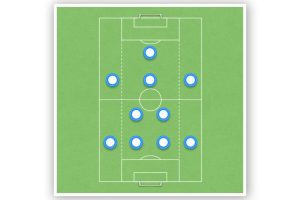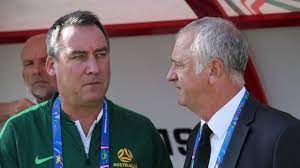Soccer Coaching for 5 Year Olds: Tips and Techniques for Effective Training
Coaching soccer to five-year-olds can be a challenging task. It requires a unique approach that is tailored to the developmental needs of young children. The primary objective of coaching at this age is to create a fun, safe, and positive environment that encourages children to develop a love for the game.
The most crucial aspect of coaching soccer to five-year-olds is to ensure that they are having fun. This means that coaches must create a program that is engaging, interactive, and age-appropriate. Children at this age have a short attention span, so coaches must keep the activities short and sweet. They should also focus on building fundamental skills, such as dribbling, passing, and shooting, through games and drills that are fun and challenging.
Moreover, coaches should be patient and understanding when working with five-year-olds. They should be prepared to repeat instructions and demonstrate skills multiple times. They should also be willing to adapt their coaching style to suit the individual needs of each child. By providing a positive and supportive environment, coaches can help children develop their confidence, self-esteem, and social skills, in addition to their soccer abilities.
Understanding the Needs of 5 Year Olds
When coaching soccer to 5-year-olds, it is essential to understand their physical, cognitive, and social development needs. By understanding these needs, coaches can create a safe and fun environment that promotes learning and development.
Physical Development
At 5 years old, children are still developing their gross and fine motor skills. They are beginning to develop their balance, coordination, and agility. However, they may still struggle with simple movements such as running and jumping.
Coaches should keep this in mind when designing drills and activities. Drills should be simple and focus on developing basic motor skills. It is essential to use age-appropriate equipment, such as smaller balls and cones, to help children develop their skills.
Cognitive Development
At 5 years old, children are beginning to develop their problem-solving and decision-making skills. However, they are still developing their attention spans and may struggle to focus for extended periods.
Coaches should keep this in mind when designing drills and activities. Drills should be short and engaging to keep children’s attention. Coaches should also encourage children to make decisions and solve problems during drills and games.
Social Development
At 5 years old, children are beginning to develop their social skills. They are learning how to interact with others and how to work as part of a team.
Coaches should keep this in mind when designing drills and activities. Drills should be designed to encourage teamwork and cooperation. Coaches should also encourage positive interactions between players and promote good sportsmanship.
In conclusion, coaching soccer to 5-year-olds requires an understanding of their physical, cognitive, and social development needs. Coaches should design drills and activities that are age-appropriate and promote learning and development in all areas. By creating a safe and fun environment, coaches can help children develop a love for the game and set them on a path to success.
Soccer Coaching Fundamentals
Coaching soccer to 5-year-olds can be a challenging task, but it can also be a rewarding experience. A coach must keep in mind that at this age, children are still developing their motor skills and coordination. Therefore, the focus should be on fun and developing basic soccer skills. In this section, we will discuss the fundamental aspects of soccer coaching for 5-year-olds.
Basic Rules of Soccer for 5 Year Olds
Before starting any soccer drills or games, it is essential to teach the basic rules of soccer to 5-year-olds. The rules should be kept simple and easy to understand. Here are some basic rules to teach:
- The objective of the game is to score goals.
- Players cannot touch the ball with their hands or arms, except for the goalkeeper.
- The ball must be kicked or headed to move it around the field.
- Players must stay on their side of the field.
- When the ball goes out of bounds, play resumes with a throw-in.
Skills and Drills for 5 Year Olds
To develop the basic soccer skills of 5-year-olds, coaches should focus on simple drills that are easy to understand and perform. Here are some skills and drills to consider:
- Dribbling: Teach children to control the ball with their feet while moving around the field.
- Passing: Teach children to pass the ball to their teammates using the inside of their foot.
- Shooting: Teach children to kick the ball towards the goal.
- Toe taps: This drill helps children to improve their ball control skills.
Teamwork and Communication
Soccer is a team sport, and it is crucial to teach 5-year-olds the importance of teamwork and communication. Here are some ways to encourage teamwork and communication:
- Encourage children to pass the ball to their teammates.
- Teach children to communicate with each other on the field.
- Use small-sided games to encourage teamwork and communication.
In conclusion, coaching soccer to 5-year-olds requires patience, creativity, and a focus on fun and development. By teaching the basic rules of soccer, focusing on simple drills to develop skills, and encouraging teamwork and communication, coaches can help children develop a love for the game and improve their soccer abilities.
Preparing for Practice
When coaching 5-year-olds, it is important to come to practice prepared. This means having the right equipment and safety measures in place, planning and structuring practices effectively, and involving parents and guardians in the process.
Equipment and Safety
Before starting practice, coaches should ensure that all necessary equipment is available and in good condition. This includes soccer balls, cones, and any other equipment needed for drills and games. Coaches should also make sure that the playing area is safe and free of any hazards, such as rocks or uneven ground.
It is important to emphasize safety during practice, especially when working with young children. Coaches should make sure that players are wearing appropriate gear, such as shin guards, and that they understand the importance of staying hydrated and taking breaks when needed.
Practice Planning and Structure
Effective practice planning and structure can help keep young players engaged and focused. Coaches should plan practices in advance, with a clear idea of what drills and games will be used and how long each activity will last.
It is important to keep practices fun and engaging, while still focusing on developing skills and teamwork. Coaches should aim to keep players moving and active, with plenty of opportunities for them to touch the ball and participate in games.
Involving Parents and Guardians
Parents and guardians can play an important role in supporting young players and helping them to succeed. Coaches should communicate regularly with parents, providing updates on practice schedules, game times, and any changes to the program.
Coaches should also encourage parents to be involved in the process, whether by volunteering to help at practices or games, or by simply cheering on their child from the sidelines. By involving parents and guardians, coaches can help create a positive and supportive environment for young players to learn and grow.
Incorporating Fun and Games
When coaching 5-year-olds, it’s essential to keep the practices fun and engaging. Incorporating games and play can help keep the players motivated, and it can also help them develop their soccer skills. Here are some ways coaches can incorporate fun and games into their practices.
Incorporating Play into Practice
One way coaches can incorporate play into practice is by using games that focus on developing specific skills. For example, coaches can set up a game where players have to dribble around cones or pass the ball to a teammate. These games can help players develop their ball control and passing skills while also keeping the practice fun.
Another way coaches can incorporate play into practice is by using games that mimic real soccer games. For example, coaches can set up a small-sided scrimmage where players have to work together to score goals. These games can help players develop their teamwork and communication skills while also giving them a chance to practice their soccer skills in a game-like setting.
Soccer Games for 5 Year Olds
There are many different soccer games that coaches can use to keep their practices fun and engaging for 5-year-olds. Here are a few examples:
- “Red Light, Green Light” – Players dribble the ball towards the coach, who calls out “red light” or “green light.” Players must stop their ball when the coach calls out “red light” and continue when the coach calls out “green light.”
- “Sharks and Minnows” – Players start on one side of the field while the coach, or “the shark,” starts on the other side. Players must dribble their ball across the field without getting tagged by the shark.
- “Capture the Flag” – Players are divided into two teams, and each team has a flag. The objective is to steal the other team’s flag and bring it back to your side of the field without getting tagged.
Rewarding and Motivating Players
Rewarding and motivating players can help keep them engaged and excited about soccer. Coaches can reward players for good behavior, effort, and sportsmanship. Here are a few ways coaches can reward and motivate their players:
- Stickers or stamps for good behavior or effort
- High-fives or fist bumps for good plays or effort
- Praise and positive feedback for good sportsmanship or teamwork
By incorporating fun and games into practices, coaches can help their 5-year-old players develop their soccer skills while also keeping them engaged and motivated.
Conclusion
Coaching soccer to 5-year-olds can be a fun and rewarding experience for both the coach and the players. By following a few simple tips, coaches can create a positive and enjoyable experience for young players that will help them develop a love for the game.
One of the most important things for coaches to keep in mind is to make sure that the players are having fun. This can be achieved by keeping practices and games engaging and interactive, incorporating fun drills and games, and being enthusiastic and supportive of the players.
Another key aspect of coaching 5-year-olds is to focus on the basics. Young players are still developing their coordination and motor skills, so it’s important to start with simple drills and exercises that focus on dribbling, passing, and shooting. Coaches should also encourage players to use the correct technique and form, even if it means sacrificing speed or power.
It’s also important for coaches to be patient and understanding with young players. Kids at this age are still learning how to follow instructions and work with others, so coaches should be prepared to repeat instructions and provide plenty of positive reinforcement.
Overall, coaching soccer to 5-year-olds requires a unique set of skills and strategies, but with the right approach, coaches can create a fun and positive environment that will help young players develop a lifelong love for the game.







